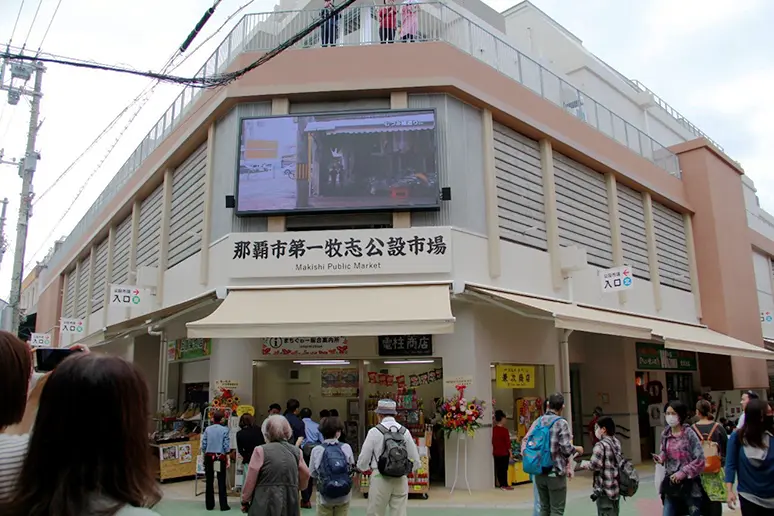
Naha City First Makishi Public Market, rebuilt in 2023
Photo: Naha City First Makishi Public Market
Naha City First Makishi Public Market, Okinawa’s largest market, delights visitors with assortments of fresh seafood and a wide range of souvenirs. A unique feature is the mochiage system, where you can get the ingredients you bought at the market cooked for you at one of the market’s restaurants.
Turning off the middle section of Kokusaidori Street, the main road that runs through central Naha City, Okinawa Prefecture, puts you on the bustling Ichiba Hondori (Market Main Street). Along the roadside, shops line up selling local ingredients unique to Okinawa — the southernmost point of Japan, consisting of about 160 small islands—such as colorful fruits and local food like shima rakkyo1 and umi budo,2 as well as souvenirs. The large three-story building that lies beyond these shops is the Naha City First Makishi Public Market.
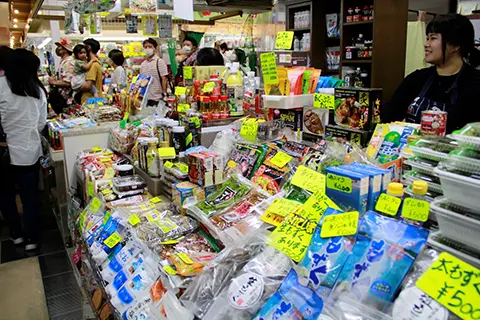
Market stalls display unique Okinawan foodstuffs.
Photo: Naha City First Makishi Public Market
According to YONASHIRO Miki of the Nahamachi Promotion Division of Naha City, Naha City First Makishi Public Market was officially established as a city-run market in December 1950, based on a market that had grown up naturally out of the chaos after the end of World War II as a place for citizens to buy and sell food and daily necessities. It later burned down in a fire but was rebuilt, and is now loved as a “kitchen” that supports the lives of city and prefecture residents. After a temporarily relocation due to the aging of its facilities, it reopened as a new market at its original site in March 2023, and to this day remains a place where one can still experience Okinawan food culture and history.
“Since opening, it has also attracted many visitors, becoming a major tourist hub of Naha City,” says YONASHIRO.
Today, the market’s first floor has 75 shops that sell fresh seafood such as spiny lobster and raw oyster, fresh meat including beef and pork, and freshly picked vegetables, as well as dried goods, alcoholic beverages, and souvenirs.
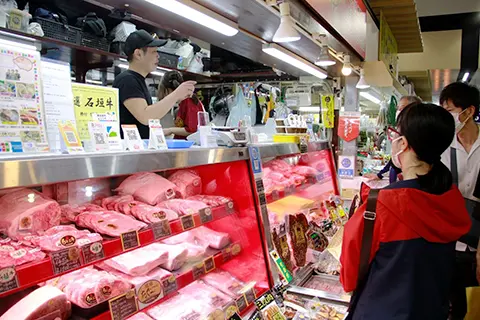
A butcher shop in the market
Photo: Naha City First Makishi Public Market
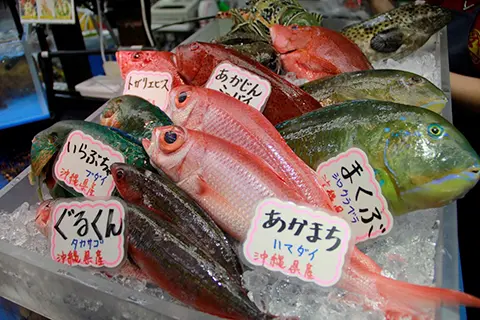
A fish shop displays fish caught off the coast of Okinawa.
Photo: Naha City First Makishi Public Market
The second floor houses 12 establishments, mostly restaurants, where visitors can enjoy Okinawan cuisine,3 sata andagi,4 gelato, and much more, and the third floor has a cooking experience room and multipurpose rooms available for events and meetings.
YONASHIRO explains that the market’s appeal lies in the warmth of the human interactions between shopkeepers and customers.
“Through conversations with the market’s shopkeepers, you can get advice on how to prepare Okinawan dishes, or have discussions comparing Okinawan and other regional food cultures. Also, when you buy something, the shopkeeper might sometimes give you a little extra (called shibun5 in the Okinawan dialect).”
Shibun is a unique Okinawan business custom that beautifully symbolizes such heart-warming interactions.
A very popular feature unique to this market is its distinctive mochiage system, which is modeled on a kind of food establishment found in Singapore and other Asian countries.
“In 1990, the market introduced the mochiage (lit. “carry up”) service, where you can take ingredients bought on the first floor, such as fresh fish or meat, up to a restaurant on the second floor, and have it cooked for you on the spot. You pay for the food at the shop where you bought the ingredients, and then pay the fee for cooking them at the restaurant.”
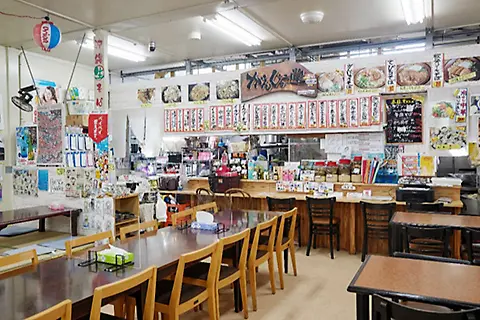
A restaurant on the market’s second floor that provides mochiage cooking services.
Photo: Naha City First Makishi Public Market
Depending on the item, ingredients bought on the first floor can be prepared into dishes such as sashimi or yakiniku (grilled meat). Many people also order drinks or noodles on the second floor to go with their meal. You can take the meat you buy and have it cooked into steak or prepared for shabu-shabu.
“If you ask the shop staff when purchasing ingredients, they will recommend a restaurant suitable for cooking your ingredients. Part of the fun is enjoying the atmosphere of an Okinawan eatery while waiting for your selected ingredients to be cooked and served. The restaurants on the second floor also stay open relatively later than the other market facilities, so they are popular with people who want to relax and enjoy their food and drink.”
According to YONASHIRO, the number of inbound tourists has also increased in recent years, with many visitors coming from Taiwan, Hong Kong, and China.
“Lately, we have seen an increase in visitors from Korea in particular. A lot of the Western tourists often come to shop or to look at the market, while Asian visitors tend to come more to enjoy the dining experience.”
Naha City First Makishi Public Market, beloved by its local citizens and prefectural residents for over 70 years as their “kitchen,” is a place not only for shopping but also for enjoying interactions with people and experiencing good food. We hope you will enjoy the market’s unique kind of exchange while experiencing Okinawan food culture.
1. A native variety of rakkyo (shallot) grown in Okinawa Prefecture. It is smaller and more aromatic than a Honshu (the main island of Japan) shallot. Eaten raw, pickled, or as tempura.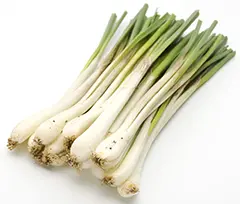
Shima rakkyo
2. A type of seaweed that is a traditional Okinawan food. Distinguished by small clusters resembling grapes and a crunchy texture. Usually eaten dipped in soy sauce or vinegar.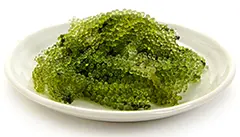
Umi budo
3. Okinawa’s regional cuisine. Standard Okinawan dishes served at casual eateries that are also widely enjoyed by travelers include soki soba, noodles topped with tender braised pork ribs; champuru, a dish of stir-fried tofu, vegetables, and meat; rafute (braised pork belly); gurukun (or takasago) no karaage, deep-fried whole whitefish; and taco rice (rice topped with (Mexican) taco ingredients).
From left: Soki soba, champuru, rafute
4. A local Okinawan doughnut-like pastry made from a mix of flour, sugar, eggs, etc., and fried in oil.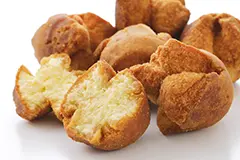
Sata andagi
5. Shibun is the custom of a shop adding a little more of something or including an additional item during a purchase. It expresses the shopkeeper’s gratitude and kind consideration — a unique aspect of Okinawan culture.
By MOROHASHI Kumiko
Photo: Naha City First Makishi Public Market; PIXTA
PREVIOUS
Historic Street Markets Rooted in and Passed Down Through Life in Kochi
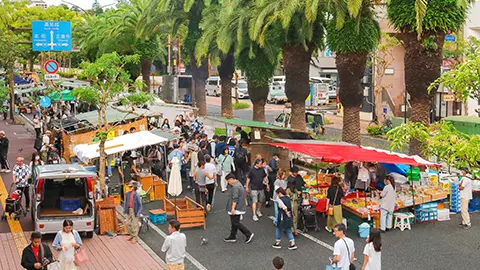
NEXT
[POLICY RELATED NEWS] Act on Promotion of Research and Development, and Utilization of Artificial Intelligence-related Technology Now in Full Effect

Feedback and Comments
Thank you for your feedback
Your valuable feedback and commnents will be referenced for our future operations.
Close

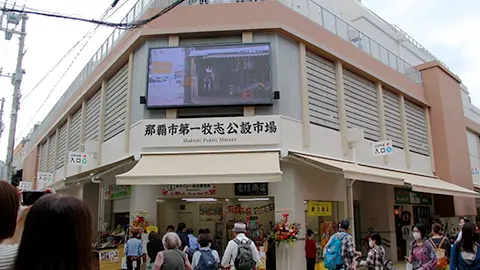
AloJapan.com